
|   |

|   |
|
April 2022 "This alone is denied to God The power to undo the past" - Greek Playwright AGATHON "The enemy is a very good teacher" - The DALAI LAMA 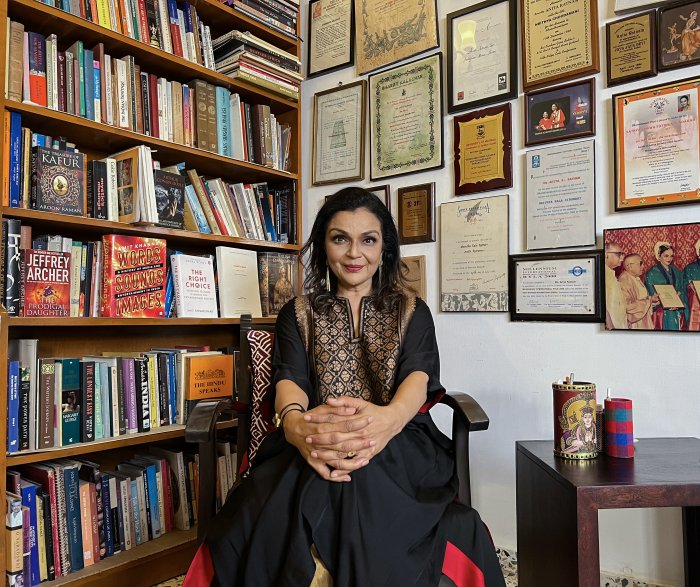 Hello dance world! I am trying to be upbeat and positive about our lives, our colleagues, our art and our eco system. But there are too many forces and events around us that are creating questions and diversions that cannot be ignored or brushed aside. I have always said that dance and politics are converging. That the two worlds are coming closer together and that we as a creative community must take cognizance of. No longer can we hide behind tradition, repertoire and memories. This month I have chosen to focus on matters that are affecting us all, in ways that may or may not have an immediate impact on our lives but are certainly affecting the way we create, share, converse and engage with our families, friends and the public. Having shared my thoughts once a month for almost 20 years has given me an optic of the dance world both inside India and abroad. 55 years after my arangetram, I think writing what I think and feel does not need the permission or sanction of others. I acknowledge the enormous power and privilege that creating and managing this portal has given me and hope that my thoughts and words are read as personal views of a mature global artiste. # "WOKE" UP TOO LATE 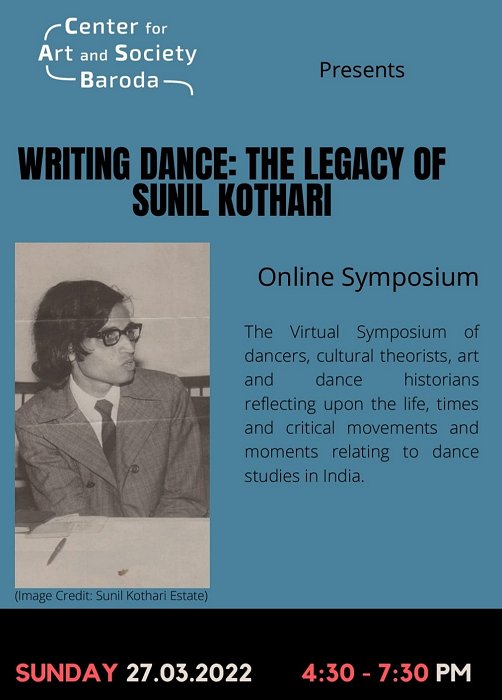 Scheduled for March 27th the event was hosted by the Centre for Art and Society, Baroda, to honour the memory of dance critic Sunil Kothari. The poster and bios featured established speakers on dance writing and cultural discourse. The event was to be led by critic Sadanand Menon with two of the featured speakers being Canadian scholar Srividya Natarajan and Indian academic Swarnamalya Ganesh. The posters were circulated and many had registered. 48 hours before the event, Srividya is believed to have pulled out. Negative comments about her participation in a panel that included the names of Sunil Kothari and Sadanand Menon were doing the social media rounds. The event is now postponed. Who spoke, who objected, who withdrew, who hesitated, who decided to postpone? It is not really clear but this cancelled event is indicative of how carefully people are treading these days. Alignments, affiliations, vicious whispers, enemies united against a common target - switching sides and arguments - it seems that anything and everything goes in the corridors of diasporic and Indian dance academia. #FACE PALM #1 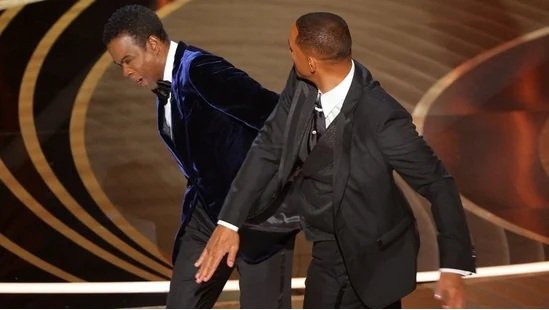 Will Smith hitting Chris Rock It is now called the slap that was heard around the world. Hollywood actor Will Smith, exhibiting toxic machismo, hitting comedian Chris Rock on live television for his comments on his wife at the 94th Oscar Awards ceremony. While the incident caught fire on social media, it is also a moment for us to recollect the many occasions when irate dancers actually slapped critics for their caustic comments or exchanged verbal "slaps" in letters or in person! I am talking about a time before social media when the weekly dance review by Sunil Kothari or Subbudu would be awaited eagerly. The critic had the freedom and the space to share his opinion and the dancer had to accept the verdict. A senior dancer, still alive, was so irate at a review by a Times of India critic that she actually removed her chappals and slapped him in public. The critic is no longer with us but the dancer is alive and well at the ripe age of 87. One event was seen by over 10 million people and replayed a million more times with memes emerging. The other incident had few witnesses and is now a distant memory with a generation of dancers. Today, Twitter is the arena for jibes and jabs, darts and swords. One does not have to be Hollywood royalty like Will Smith or an Indian dance icon to become irate and act unreasonably in public. As another cinema icon Denzel Washington warned Will Smith backstage, "Beware... It is just when the glory rises that the devil seizes you." Is acting out in public a forgivable act? Do celebrities deserve the same yardstick of decorum that we are subjected to? Can they be excused for moments of lapse? Or are they held to a higher standard? If Rock made a bad joke in poor taste or the dance critic made a personal comment within his review, is a physical assault excusable? Are actors superior to comedians? Are dancers exalted above critics? #FACE PALM #2 Slaps and insults can come in all sorts of disguises. Like in Palakkad, Kerala, when Mohiniattam dancer Neena Prasad's performance was interrupted by the district judge Kalam Pasha for reasons of the music being a "disturbance". Police officials surrounded the stage and forced the microphones and all amplification to be cut off. Neena refused to leave the stage, insisting on using a single microphone with almost no amplification and completed the show. Imagine the singer, conductor, percussionist and flautist all sharing one mike! Just a few days later, born Muslim turned atheist dancer Mansiya was barred from performing Bharatanatyam at a Thrissur temple because of her faith. Do we believe that art does not have boundaries? Can we actually talk about the classical dances of India without including the environment of faith that it has sprung from? All our dance forms are now global, being taught and performed by dancers of various geographies, histories and beliefs. South America, Europe, Russia, Japan, China, South Africa, Fiji, New Zealand - there is possibly not a single corner of this planet that has not been touched by India's dance and music traditions. Is faith becoming a barrier on the learning and the sharing of the dance art? More importantly, Neena Prasad had no forum to address her grievance. The insult she faced and the harassment of her troupe did not have any channel to be directed towards. Fortunately, the mainstream media picked up the story. We have since learned that there have been other incidents in the state of Kerala involving other Mohiniattam and Bharatanatyam dancers but the artistes did not come forward for fear of repercussion or unwanted publicity. #VANISHING HERITAGE 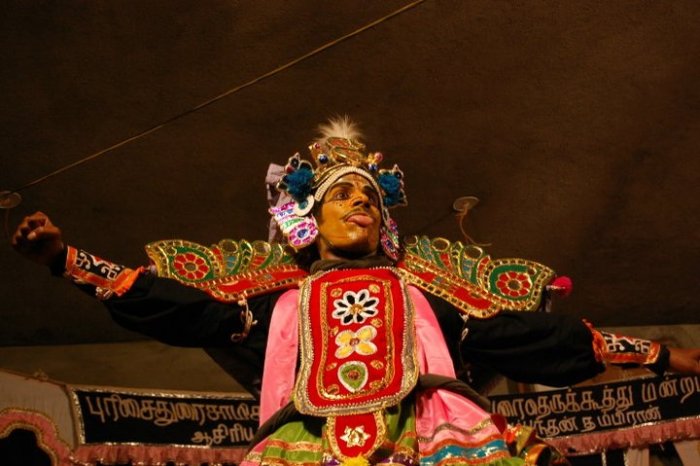 Palani Murugan I learned of the demise of Vaishnavite scholar Tirunarayanan Iyengar at age 94 in Chennai. He was a storehouse of information about temples and sculptures and was one of the vital links in my revival efforts of KAISIKA NATAKAM in my ancestral village of Tirukurungudi. His passing is a reminder of the disappearing oral traditions of storytelling and memoir - and a lifetime of total immersion in the pores and sinews of a particular geography. In conversation with hereditary folk performer Palani Murugan in Pondicherry, we learned that the rapid industrialisation in second tier cities of India is being implemented at the cost of families and youngsters learning the traditional folk and martial arts. A company like SIPCOT (State Industries Promotion Corporation) in Tamilnadu, hires and trains local youth with a living wage and thereby improves the standard of living in each household. However, several of the employees are from performing arts families and are thus torn from the roots of their art. This is not SIPCOT's fault. They are perhaps unaware of the loss of an intangible heritage. The youngsters prefer going to an office or a factory during regular hours rather than toiling for weeks and months on learning a traditional art form with no economic bonus at the end of their endeavour. Palani is a national award winning artiste and moved away from Chennai to his native village during the pandemic. The move was to be closer to his roots and to encourage young men to learn KOOTHU, SILAMBAM and FOLK DANCE. The number of applicants for his knowledge was in single digits each time he offered a session. Even if the parents are interested in their sons learning, the young men refused, citing private time and social interactions with friends as more important. # WAR - CONFLICT War is brutal for the creative soul. In the ongoing invasion of Ukraine by Russia, social media was filled with terrified Ukrainian artistes fleeing their homes. One woman played her piano for the last time before her flat was bombed, Another was seen carrying a viola and her young son under each arm and walking towards Poland. Over 30 years ago, when the Kashmiri Pandits were chased out of their homes and filled refugee camps in and around Delhi, it was not considered a tragedy of inhuman proportions. The success of the film KASHMIR FILES has opened a tinder box of high decibel emotions and pent up anger. My niece is married to a member of the community and I was surprised to learn that the generation born outside India were clueless about the tragedy that occurred to their ancestors. Their parents had transformed the sorrow and loss into building a brave new life in another soil for their children. In the transition, they had purposely chosen not to burden their American born children to the dark histories of the past. I feel it is a huge loss for everyone not to know the history of our land. Even if Partition was not an immediate impact on my South Indian family, or the Pandit genocide in Kashmir a distant historical anecdote, it is still my history. My country. My geography. Discussion about the film (it is powerful, disturbing and raw) is rampant in the corridors and salons of New Delhi and elsewhere in India. Accusations, simmering hate and thoughts of revenge are not far off from the most elegant of homes. Expected, the "woke" gang who are ever quick to comment, have remained silent. Perhaps it is because the victims of the violence were upper caste Brahmins! If we are weeping and feeling depressed at the videos of Ukrainian artistes, why are we not sad at the enormous loss of culture and heritage that the Pandits must have faced? Is Bhand Pather the only significant art form to emerge out of Kashmir? What about the music and the dance arts? What has happened to them? Lost forever? 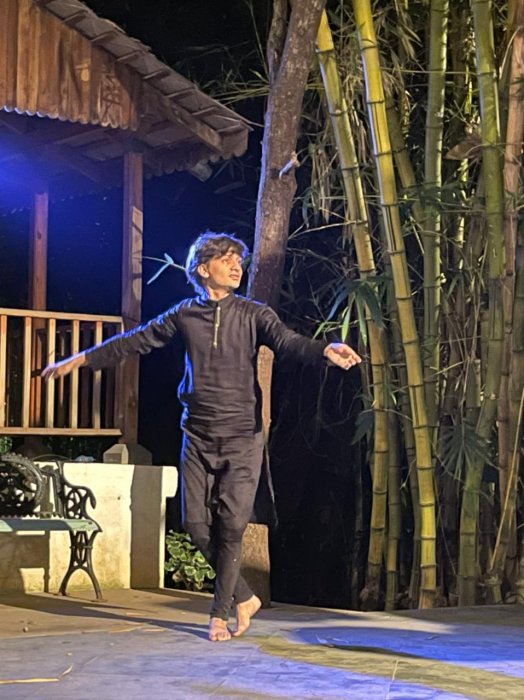 Masoom Parmar Today, non Hindu classical dancers are hesitant to share their multi faith work in today's polarised atmosphere. Like Bangalore artiste Masoom Parmar, who has received a grant to develop his work based on the twin streams of Islam and Bharatanatyam. While in Pondicherry for our company retreat, we were asked to share some of our individual work on the closing night of the Pondicherry Heritage Festival. On Masoom's suggestion, I sought clearance from the organisers. I would have never thought to do that but Masoom insisted. #POLITICAL ART American actor Billy Crystal, of Jewish faith, has established PEACE THROUGH THE PERFORMING ARTS at the Hebrew University of Jerusalem, Israel. It is a forum to present workshops, performances and lectures towards fostering tolerance and improved social and cultural understanding. Actors, dancers and teachers from Palestine and Israel create and share knowledge as a form of resistance and push back to the ongoing discord between the two countries. I wonder if we can have a similar forum where artistes can gather to dream and create, irrespective of their faith. In India, the state of Manipur is bristling with contemporary artistes creating powerful work. Surjit Nongmeikapam and Aseng Borang are two performers who are steeped in the arts and politics of their bodies. Many of us remember Ratan Thiyam who was unapologetically political and used his brilliant design vision to create powerful scenographies and narratives on stage. #TAMILNADU SHOWS THE WAY 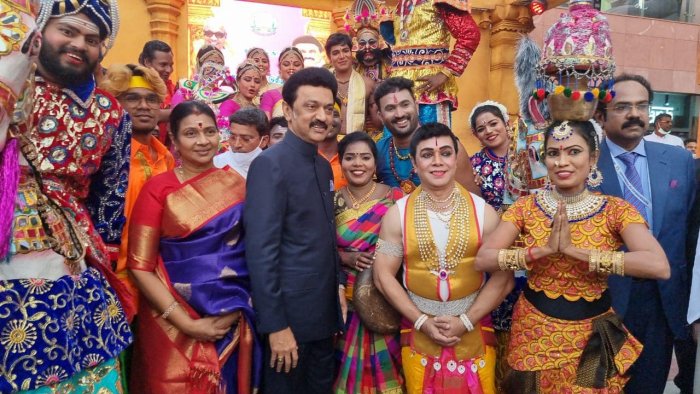 Zakir Hussain and CM Stalin In this atmosphere vitiated by hate and suspicion, Bharatanatyam dancer Zakir Hussain has experienced a shining moment. He accompanied Tamilnadu Chief Minister MK Stalin to Dubai for a business trip. Hoping to attract investment from the oil rich Middle East, Zakir Hussain was the State's cultural mascot. His Muslim heritage and love of a Tamil art form was what the newly elected CM is trying to portray as the secular face of his State. According to Zakir Hussain, the trip was an enormous success and many in the UAE were stunned that a Muslim male had made Bharatanatyam and a female Goddess/Andal as his twin passions. Still, I ask Can Pakistani / British Kathak artiste Nahid Siddiqui be allowed to visit India with her magnificent art today? Could Sania Mirza have been allowed to play tennis in short skirts in the India of today? Could Francis Barboza be permitted to dance his Bharatanatyam varnams in churches and temples as he did in the 1980s? What about the Japanese, Russian, Chilean, Mexican, Peruvian, French and Spanish dancers and musicians who are in India and in their home countries learning classical dance and music? Should they be alarmed that their faith is not aligned with that of their art? When management of temples in India is interfered with by politicians for their own gain while other citadels of faith are left undisturbed, what is the expected reaction from the majority community? How do classical Indian dancers across the world feel about repertoire that is distinctly yoked to temple, faith and devotion? How do we keep our balance in the midst of so much instability? Can our arts sustain and nourish us from within? How can we become less diva-ish and more human-ish to allow the world into our embrace? Can we lean in and listen instead of reacting? Can we accommodate instead of accusing? Or will it attract more and more of #FACE PALM in various shapes AND intensities? Wishful thinking? Perhaps! Still. Worth a try! #FACE SMILEY The first NARTHAKI team retreat in Pondicherry threw up several useful and productive ideas for the brand. Meeting after two years, the beautiful KARIAPPA HOUSE heritage home was a perfect backdrop to a flow of ideas and suggestions for the NARTHAKI brand now into its 31st year. From two phone books to an online portal and now a respected digital producer and curator of original content, the immediate future is challenging and hopeful. The session on lighting basics for classical dancers initiated by Lakshmi Ramaswamy of MUDHRAALAYA, was so well attended that Victor Paulraj and I were truly surprised at the enthusiasm of Chennai classical dancers. However, except for a few, most dancers were timid and hesitant to experiment with the opportunity. All across the world dancers are continuing to perform, rehearsals are continuing to happen consistently, festivals and shows are on the rise and travel has picked up speed. Yes, there is much to celebrate and feel comforted by. Unless we believe in the power of beauty and harmony as our guard rails there is little else to hold on to. In his acceptance speech at the Oscars for BEST LIVE ACTION SHORT FILM, British / Pakistani actor and musician Rizwan Ahmed said eloquently, "In such divided times, we believe that the role of story is to remind us that there is no US and THEM. There is only US." Until next time... - Anita R Ratnam Chennai / Bangalore / New Delhi Twitter: @aratnam Facebook: Anita R Ratnam Instagram: @anitaratnam Blog: THE A LIST / anita-ratnam.blogspot.in Responses * Deep & loud contemplation as well as voice out. It does spark thoughts at multi levels. - Lakshmi Ramaswamy (April 3, 2022) * It's always a brilliant read that you write from all facets. Being a creative artist with wishful thinking shapes many followers to be elitely conscious. - Gullapudi Raman Kumari (April 3, 2022) * The picture is very disturbing. Classical dance has thrived through the changing times and should not be confined to the religious faith of individuals. - Varada Pandit (April 2, 2022) * Gurudev Tagore said "Education without character is like body without head". Literacy does not mean having good human traits. Our education system do not focus on character building and that is the reason for intolerance. What could be done to reverse the situation? I wonder! God save the HIS own land. - VP Dhananjayan (April 2, 2022) * At the drop of a hat. Kerala janata go on strike / hartal and what not. Strange, none happened at the humiliation of a well known artiste like Neena Prasad. Kerala, the God's own land - but Devil's workshop indeed. - VP Dhananjayan (April 1, 2022) * It is most unfortunate that the most literate state is turning intolerant. - Anita Ratnam (April 1, 2022) Post your comments |